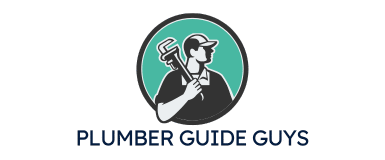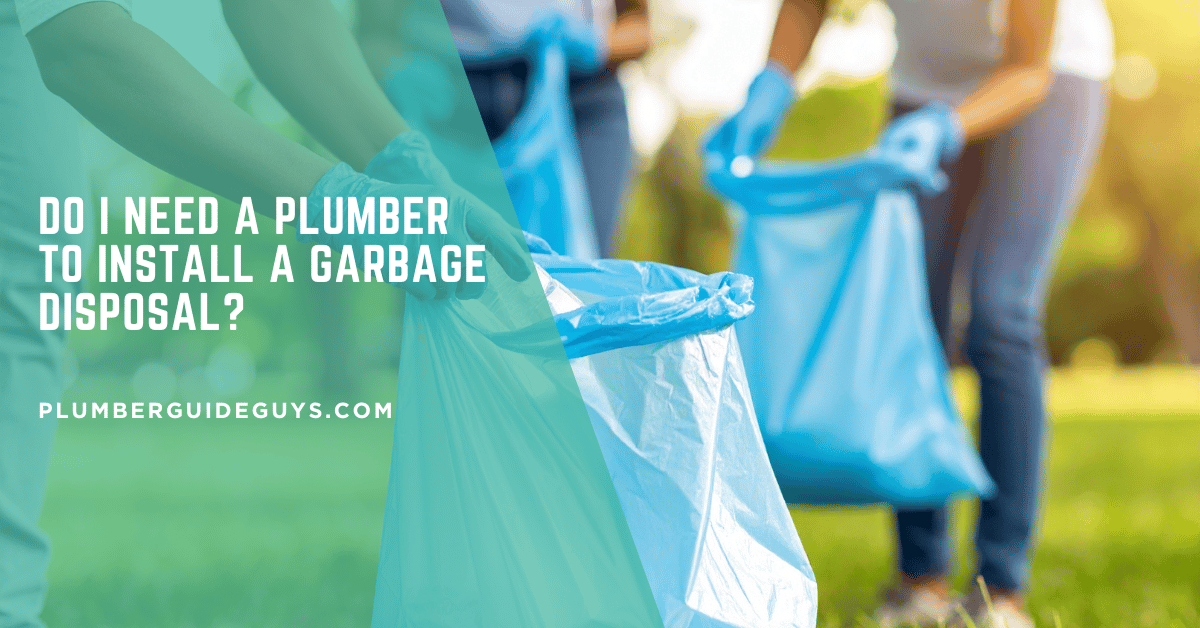Affiliate Disclosure
Plumber Guide Guys is a participant in the Amazon Services LLC Associates Program, an affiliate advertising program designed to provide a means for sites to earn advertising fees by advertising and linking to Amazon.
Do I Need a Plumber to Install a Garbage Disposal? Are you thinking about installing a garbage disposal yourself? Or do you need a plumber? It’s not just about turning a wrench. It involves complex plumbing and electrical connections that can be tough for even the most skilled DIYers.
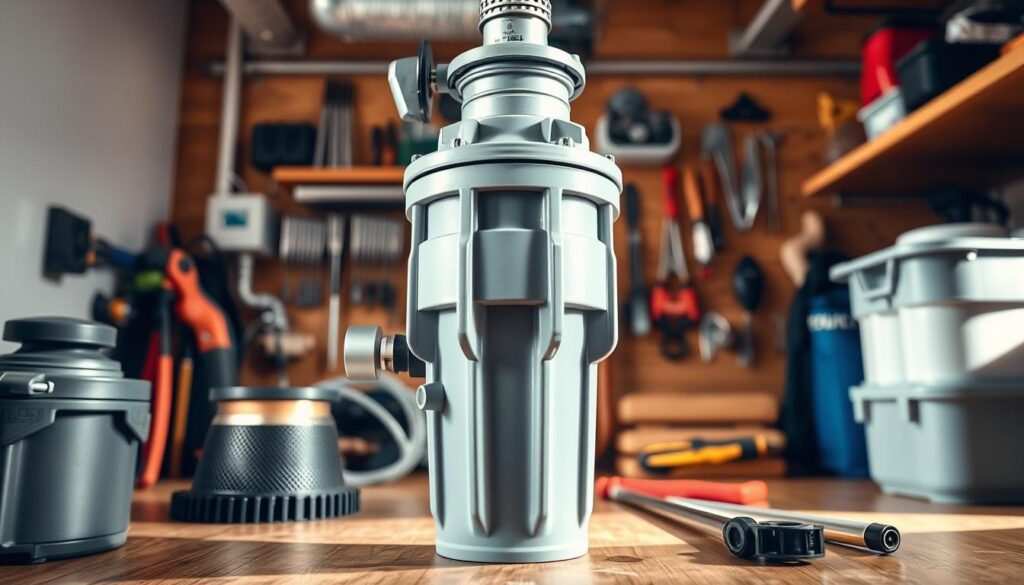
Many homeowners wonder if they should hire a plumber or try to install it themselves. The task includes tricky electrical wiring, precise plumbing connections, and knowing local building codes. These elements can turn a simple project into a big headache.
Don’t let your kitchen upgrade stress you out. This guide will help you understand if you need a plumber or can do it yourself. We’ll cover the key points of garbage disposal installation.
Key Takeaways
- Garbage disposal installation requires both plumbing and electrical expertise
- DIY installation can save money but carries risks
- Professional plumbers ensure code compliance and proper installation
- Some installations are more complex than others
- Warranty protection may depend on professional installation
Table of Contents
Understanding Garbage Disposal Installation Basics
Installing a garbage disposal is easy for DIY fans. It’s great for those who want to do it without a plumber. Knowing the basics is key to a successful project.
First, learn about the different garbage disposals out there. Each has its own features and needs. This affects how your kitchen works.
Types of Garbage Disposals
- Continuous Feed Disposals: Most common type, operates while switch is on
- Batch Feed Disposals: Activates only when lid is in place, providing additional safety
- High-Horsepower Models: Designed for larger households with more frequent kitchen waste
Common Installation Requirements
To install a garbage disposal yourself, you need to meet certain requirements. Make sure:
- Electrical connections are correct
- Sink mounting hardware is compatible
- There’s enough space under the sink
- Plumbing connections are right
Basic Tools and Materials Needed
Having the right tools makes installation easier. You’ll need:
- Screwdriver set
- Adjustable pliers
- Plumber’s putty
- Electrical tester
- Pipe wrench
Knowing these basics helps you install with confidence. It also lowers the chance of problems.
Do I Need a Plumber to Install a Garbage Disposal?
Thinking about installing a garbage disposal yourself or getting a plumber to do it? It’s a big decision. You need to think about your skills and what you’re comfortable with. DIY or hiring a pro depends on many factors.
Wondering if you should get a plumber for your garbage disposal? Look at your DIY skills first. Not everyone is ready for the challenges of installing a disposal.
- Electrical knowledge and experience
- Plumbing connection expertise
- Understanding of local building codes
- Access to specialized tools
Plumbers have big advantages when it comes to installing garbage disposals. They know how to connect plumbing right, check electrical wiring, and spot problems you might miss.
| DIY Installation | Professional Installation |
|---|---|
| Lower upfront costs | Guaranteed professional work |
| Personal satisfaction | Warranty protection |
| Potential for mistakes | Code compliance guaranteed |
Pro tip: If you’re not sure about plumbing or electrical, getting a pro might save you money in the long run.
Benefits of Professional Plumber Installation
Hiring a pro for garbage disposal installation saves you time, money, and stress. They have the skills and knowledge needed for more than just installing.
- Precise plumbing connection techniques
- Comprehensive understanding of local building regulations
- Advanced troubleshooting skills
- Guaranteed quality workmanship
Expertise in Plumbing Connections
Professional plumbers know all about garbage disposal hookup needs. They check your plumbing and suggest the best disposal for your kitchen.
Knowledge of Local Building Codes
Every area has its own plumbing rules. A pro plumber makes sure your disposal is installed right, avoiding legal issues or future problems.
| Professional Service Benefit | Potential Savings |
|---|---|
| Code Compliance | Avoid Costly Fines |
| Proper Installation | Prevent Water Damage |
| Expert Recommendations | Optimal Unit Selection |
Warranty Protection Benefits
Many makers need professional installation to keep the warranty valid. By choosing a pro, you safeguard your investment and ensure it works well for years.
DIY Garbage Disposal Installation Considerations
Installing a garbage disposal yourself can be a fun DIY project. Before starting, you need to think about a few important things. These will help you decide if you can do it without a plumber’s help.
How skilled you are matters a lot. You need to know some plumbing and electrical basics. Check if you’re okay with these areas:
- Electrical wiring connections
- Plumbing pipe modifications
- Sink mounting techniques
- Understanding local building codes
Here are some key points to consider for a DIY installation:
- Septic System Compatibility: Make sure your disposal fits with your septic system
- Electrical Requirements: Check if you have the right voltage and amperage
- Under-Sink Space: Measure your cabinet space to see if it fits
- Existing Plumbing Condition: Look for any damage or repairs needed
While saving money is tempting, remember the risks. Wrong connections can cause water damage, electrical dangers, or lose your warranty. If you’re not sure, it’s safer to get a professional plumber.
Essential Tools and Materials for Installation
Installing a kitchen sink disposal needs careful planning and the right tools. Knowing how hard it is can help if you prepare well. You’ll need a good toolkit for a safe and easy installation.
Required Safety Equipment
Always put safety first when installing a kitchen sink disposal. You’ll need:
- Safety glasses to protect your eyes from debris
- Work gloves to prevent cuts and provide grip
- Closed-toe shoes for foot protection
- Electrical safety gloves when handling wiring
Necessary Plumbing Tools
For a smooth installation, you’ll need specific tools:
- Adjustable wrench
- Screwdriver set (Phillips and flathead)
- Pliers
- Tape measure
- Electrical voltage tester
“Preparation is the key to a successful DIY garbage disposal installation.” – Professional Plumbing Experts
Additional Materials Checklist
You’ll also need these extra items for a complete installation:
- Plumber’s putty
- Electrical wire nuts
- Teflon tape
- Drain pipe sealant
- Mounting hardware
Pro Tip: Always double-check your tools and materials before beginning the installation to prevent unnecessary trips to the hardware store.
Electrical Requirements and Safety Precautions
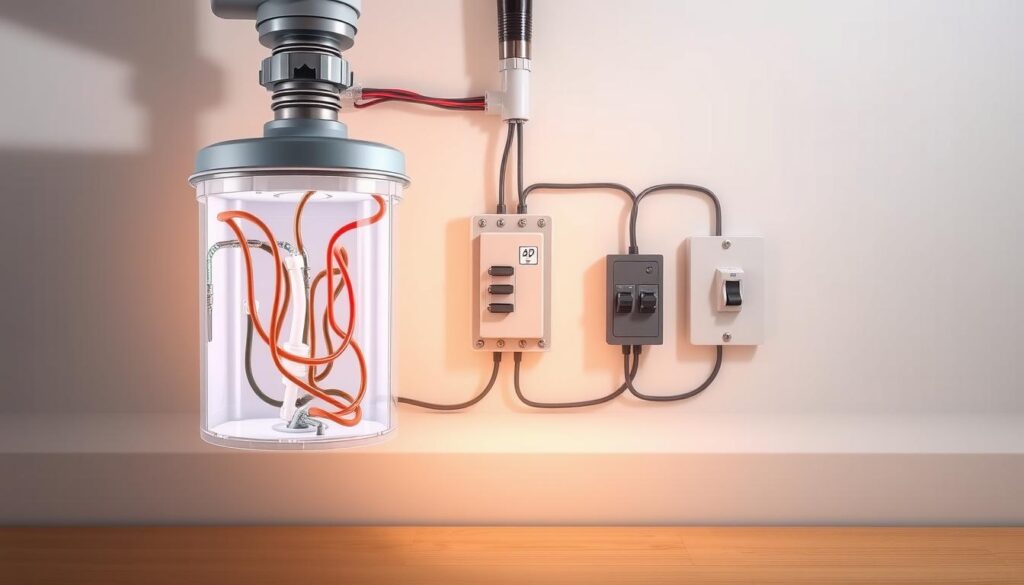
Installing a garbage disposal needs careful attention to electrical requirements. It’s important to know the electrical hookup needs for a safe and successful setup. Most garbage disposals require a dedicated electrical circuit to work well and avoid electrical dangers.
Before starting any electrical work, you must take important safety steps:
- Always turn off the main power supply at the circuit breaker
- Use a voltage tester to confirm no electricity is present
- Wear protective electrical safety gear
- Ensure proper grounding of the electrical connection
The electrical needs for a garbage disposal include:
- A 120-volt dedicated circuit
- Minimum 15-amp circuit breaker
- Properly installed electrical outlet near the sink
- Matching wire gauge for the disposal’s power needs
Caution: Homes built before 2000 might require electrical upgrades to meet current garbage disposal hookup requirements. Older wiring systems may not support modern appliance electrical demands, so consulting an electrician is recommended.
Professional electricians can help you navigate complex electrical installations. They ensure your garbage disposal connects safely and meets all local building codes.
Step-by-Step Installation Process Overview
Installing a kitchen sink disposal can be tough. It needs careful planning and execution. Knowing how hard it is can help you decide if you can do it yourself or need help.
Before you start, get all the tools you need and clear your workspace. The process has several important steps that require focus.
Removing the Old Disposal
Removing the old disposal needs special care:
- Turn off power at the circuit breaker
- Disconnect electrical connections
- Loosen mounting ring securing the old unit
- Carefully remove the existing disposal
Preparing the Sink Connection
Getting the sink ready is key for a good installation. Clean the area well and check the mounting hardware for damage.
- Remove old plumber’s putty
- Check sink flange alignment
- Ensure proper drainage path
Making Proper Connections
Secure electrical and plumbing connections are vital. Follow the manufacturer’s instructions closely to avoid mistakes.
- Align mounting bracket carefully
- Connect electrical wiring correctly
- Secure drain pipe connections
- Test for leaks before finalizing installation
Pro tip: If you’re unsure about any step, getting a professional can save you from costly mistakes in your garbage disposal installation project.
Common Installation Challenges and Solutions
Installing a garbage disposal can be tricky for DIY fans. Knowing the common problems helps you tackle the garbage disposal installation difficulty better.
When you start a DIY garbage disposal project, you’ll meet some usual hurdles. These can test your mechanical skills. Here are the main challenges homeowners often face:
- Corroded Mounting Hardware: Old sink attachments often develop rust and corrosion, making removal challenging
- Tight Workspace: Under-sink areas can be cramped and difficult to maneuver
- Electrical Connections: Proper wiring requires precise electrical knowledge
- Plumbing Alignment: Matching new disposal to existing plumbing configurations
Overcoming these challenges needs patience and a smart plan. Measure your space well, use good tools, and ask for help if needed.
Pro tip: If you hit a snag during removal or installation, it might be smarter to get a pro plumber. They can fix complex issues fast and save you money.
Cost Comparison: DIY vs Professional Installation
When you think about replacing your garbage disposal, knowing the costs is key. The cost to replace a disposal can change a lot based on how you install it.
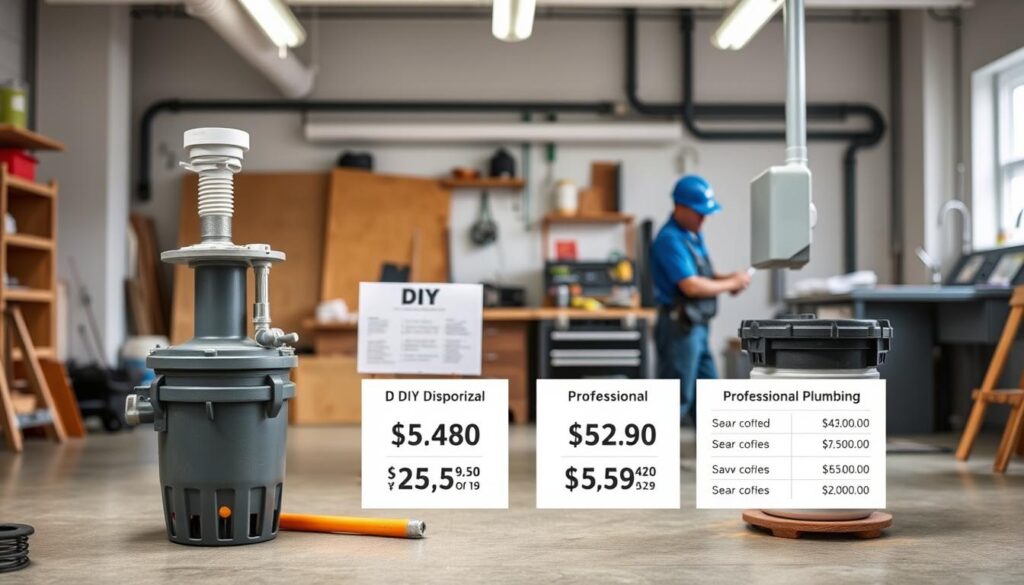
Deciding between doing it yourself or hiring a plumber comes down to money:
- Upfront material costs
- Potential long-term repair expenses
- Warranty protection
- Skill level and time investment
Material Costs Breakdown
Installing a disposal yourself means buying the unit and tools. Prices for the disposal can be $100 to $300. Tools might add $50 to $100 more.
Professional Service Fees
Plumbers charge $200 to $500 for the job. This includes:
- Expert electrical and plumbing connections
- Compliance with local building codes
- Warranty-backed installation
Long-term Cost Considerations
DIY might look cheaper at first, but bad installation can cost a lot. Pros often offer warranties, saving you money later.
Choosing professional installation can avoid costly errors and ensure your disposal works right.
Your situation will decide the best choice for you. Think about your skills, time, and comfort with plumbing and electrical before you decide.
Maintenance Tips After Installation
After you’ve installed your kitchen sink disposal, keeping it in good shape is key. Regular care helps your disposal last longer and work better. It also saves you money by avoiding expensive fixes.
Here are some important tips to keep your disposal running well:
- Run the disposal frequently to prevent rust and keep internal components moving
- Clean blades by grinding ice cubes and small citrus peels periodically
- Always use cold water when operating the disposal to solidify grease
Knowing how to care for your disposal is important, not just when you first install it. Professional plumbers say to avoid certain that could harm your disposal:
- Avoid putting fibrous vegetables like celery
- Never dump coffee grounds or large amounts of starch
- Keep grease and oil out of the disposal
By following these tips, you can keep your disposal in great shape. Regular cleaning and careful use are essential for its longevity.
When to Definitely Call a Professional
Knowing when to hire a professional for garbage disposal installation can save you time, money, and prevent plumbing disasters. Some situations are too complex for DIY efforts.
- Complex kitchen layouts with non-standard plumbing configurations
- Older homes with outdated electrical or plumbing systems
- Lack of necessary installation tools or technical skills
- Potential warranty voiding through self-installation
When deciding if you need a plumber for garbage disposal, consider these key points. A professional ensures the right electrical connections, correct mounting, and follows local building codes.
| Installation Scenario | Professional Recommendation |
|---|---|
| Electrical Circuit Complexity | High Risk – Require Professional |
| Existing Plumbing Modifications | Moderate to High Risk |
| Limited DIY Experience | Strong Recommendation for Expert |
Red flags for needing a professional include water leaks during setup, unexpected electrical issues, or big pipe changes for installation.
Safety and precision are more important than saving money in garbage disposal installations.
Professional plumbers are experts in handling complex installations. They make sure your kitchen upgrade is smooth and safe.
Conclusion
Deciding if you need a plumber for a garbage disposal depends on several key factors. The choice between hiring a plumber or doing it yourself isn’t simple. Your skills, the complexity of your home’s plumbing, and how comfortable you are with technical tasks are all important.
Do you need a plumber for a garbage disposal? It’s not always necessary, but a pro can help avoid problems. If you know a bit about plumbing, you might install it yourself. But, if you’re unsure about electrical or sink changes, getting a plumber is wise to avoid expensive errors.
Your choice should consider safety, cost, and how well it works in the long run. Be honest about your skills. If you’re not sure about any part, hiring a pro is safer. It ensures your plumbing is set up right and meets all codes, giving you peace of mind.
Every home is different. Think carefully about your options. Check local building rules and choose the best method for your skills and budget. This way, you’ll feel confident and comfortable with your home improvement project.
